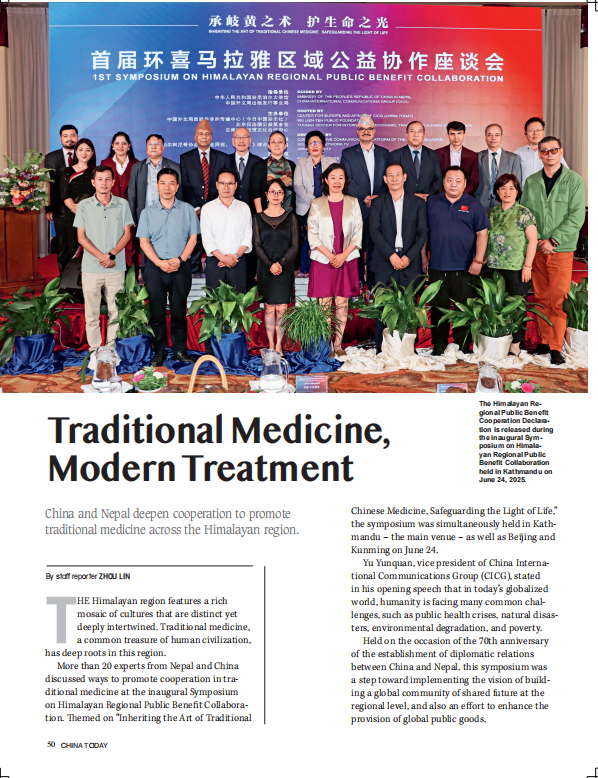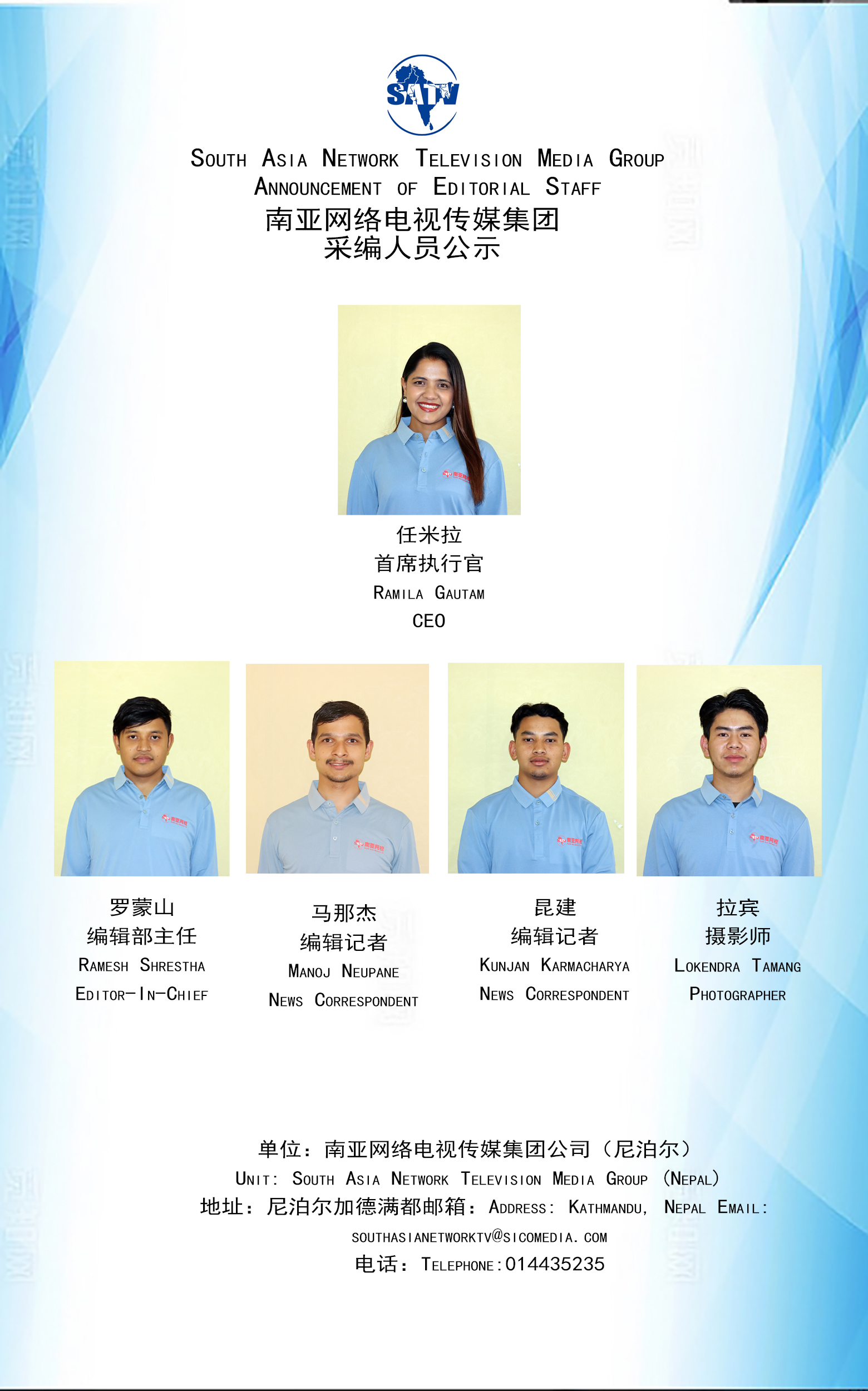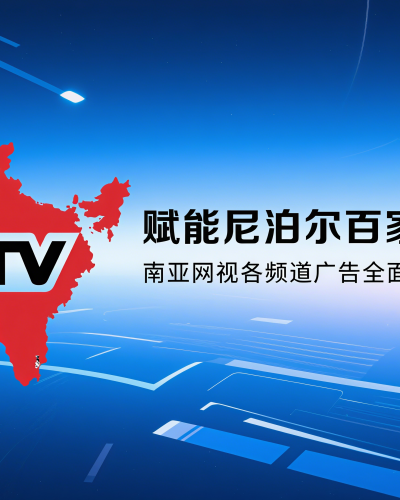
Kathmandu, June 24, 2025 — In a landmark move to enhance regional healthcare and preserve cultural heritage, China and Nepal co-hosted the 1st Symposium on Himalayan Regional Public Benefit Collaboration, bringing together over 20 experts and delegates to advance the integration of traditional medicine systems. Held simultaneously in Kathmandu, Beijing, and Kunming, the symposium was themed “Inheriting the Art of Traditional Chinese Medicine, Safeguarding the Light of Life.”
The event marked 70 years of diplomatic ties between the two nations and signaled a shared commitment to building a healthcare partnership rooted in traditional wisdom, including Traditional Chinese Medicine (TCM), Ayurveda, and Tibetan medicine.
The significance and outcomes of the symposium were prominently featured by China Daily, which reported on the evolving role of traditional medicine as a modern public health solution across the Himalayan region.
Bridging Borders Through Shared Healing Knowledge
Wang Xin, Counselor at China’s Embassy in Nepal, emphasized that the China-Nepal healthcare partnership has become a core element of bilateral cooperation. Chinese-assisted hospitals and diagnostic centers in Nepal are now improving healthcare access for thousands.
The B.P. Koirala Memorial Cancer Hospital, for instance, has emerged as a major cancer treatment center, thanks to longstanding collaboration with Chinese medical teams. Recent developments include the integration of TCM-based therapies into Nepal’s public health system and the establishment of specialized centers in Chitwan and Kathmandu.
As China Daily noted, the event served as a platform for both countries to pool strengths, share expertise, and breathe new life into traditional medicine systems by making them more accessible, research-driven, and globally relevant.
A Shared Vision for Public Health
Yu Yunquan, Vice President of the China International Communications Group (CICG), stated that traditional medicine offers valuable tools to address modern health challenges, from chronic illness to mental wellness. He positioned the symposium as a foundation for "global public benefit goods" that enhance well-being regionally and beyond.
Nepalese leaders echoed the sentiment. Santosh Paudel, President of the Nepal Health Professional Federation, reaffirmed the growing popularity of acupuncture and herbal therapies among Nepali patients, calling for deeper collaboration in clinical training and policy alignment.
Summit Outcomes: Research, Access, and Innovation
The symposium focused on four main objectives:
Launching a regional cooperation framework,
Advancing joint research in TCM and herbal sciences,
Improving medical access through outreach and telemedicine,
Promoting cultural understanding and health education.
Prominent figures such as Xu Anlong (Beijing Wu Lien-Teh Foundation), Gao Lamping (China Academy of Chinese Medical Sciences), and Harish Chandra Shah (Nepal-China Cultural Educational Association) highlighted the need for knowledge-sharing and institutional exchange.
The symposium also featured the launch of the Wu Lien-Teh Public Welfare Education Center in Nepal, aimed at offering remote consultations, community education, and public health services.
Building the Silk Road of Health
Zhou Yawei of the China National Medical Technology Market Association and other Chinese officials proposed establishing a Himalayan medicinal plant gene bank and expanding market access for traditional remedies through public-private cooperation.
Guizhou Province, a leader in TCM innovation, pledged to donate over RMB 1 million worth of commonly used medicines to Nepali non-profits. Additionally, a new drug developed by Guizhou Bailing Group for diabetes treatment is being offered to Nepal as part of a broader health assistance initiative.
Education, Ethics, and the Way Forward
Li Yinghua of the China Academy of Chinese Medical Sciences underscored the importance of education, ethics, and international cooperation in traditional medicine. His views, highlighted in China Daily’s coverage, echoed the broader call to align spiritual values with scientific development.
Kishor Shrestha, Chairman of the Nepal-China Media Forum, summed up the shared aspiration:
“Let us protect and promote the healing traditions of the Himalayas. Let us climb the tallest mountain of compassion, the widest bridge of cooperation, and the deepest well of healing our region — and the world — has ever seen.”



















